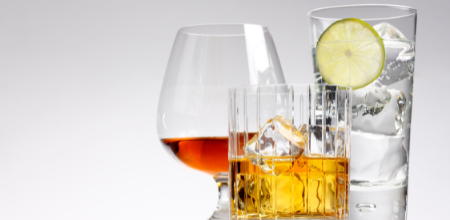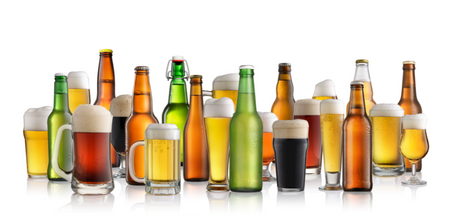Factors Contributing to Heavy Alcohol Use Among People with Brain Injuries
Categories: Substance Abuse
What are the drinking patterns of persons with brain injury? What are the injury-related and social factors that are associated with these patterns?
Past Studies
Past Studies: Previous research found that many people with brain injuries were intoxicated at the time of their injuries, or were problem drinkers before they were injured. Post-injury studies showed, typically, that more than a quarter of the persons in the studies had alcohol abuse problems. . However, these studies were often small in size and did not look at drinking patterns for more than two years after injury.
This Study
This Study identified social and injury related factors that contributed to alcohol use among a group of 322 people with brain injuries in four of the Model Systems programs. These people had sustained their injuries 3 or more years prior to the study and were at least 16 years old. Eighty percent were men, two thirds had a high school education or less and one third had at least some college. Information was collected about age, education, length of hospitalization, severity of injury, degree of disability, and patterns of alcohol use at 1 year, 2 years and 3-4 years after injury. In addition to studying the large group, the researchers studied the drinking patterns of some of the same people (73 persons) to determine changes in drinking patterns over time.
The researchers found that:
- Two thirds of the people in the study had elevated blood alcohol levels at the time of admission and almost half were considered intoxicated.
- After the injury, the majority of the people in the group did not use alcohol.
- Of those that were abstinent 1 year after the injury, 1 in 4 began drinking within 3 to 4 years and 1 in 10 became heavy drinkers.
- At each follow up period (1, 2 and 3-4 years after the injury) at least of one third of the group moved from one drinking category (abstinent, infrequent, light, moderate, heavy) to another.
- The prevalence of moderate and heavy drinkers among persons with TBI in the study was about the same as in the general population.
- Younger people with TBI and people with high blood alcohol levels when admitted to the hospital were more likely to become heavy drinkers after the injury.
- More severe injuries may be associated with less alcohol use.
- Longer hospital stays and greater degrees of disability on admission to the program were associated with less frequent alcohol use.
Who May Be Affected By This Study
People with moderate brain injuries, especially younger people and those who were problem drinkers before they were injured.
Caveats
People who use alcohol heavily are normally not as available for follow-up studies as those who abstain from alcohol, so abstainers may be over-represented in this study. The people with brain injuries in this study either had moderate or severe brain injuries, and people with mild injuries may have different drinking patterns. The researchers call for an examination of drinking patterns of people with all the levels of brain injuries, and the use of other tests for alcohol dependence.
Bottom Line
Although many people with brain injuries abstain from alcohol, those with moderate injuries, or who are young adults, or who were heavy drinkers before they were injured, seem to have a higher chance of having drinking problems. Because a drinking problem can interfere with nearly every aspect of daily living, it is suggested that the drinking habits of people with brain injuries be carefully watched. In addition, because a person’s pattern of drinking tends to change overtime, prevention efforts should continue beyond the acute rehabilitation and community re-entry periods.
Please take a moment to comment on the value of this abstract:
Click here to take a brief survey
Find This Study
Kreuzter, Jeffrey et. al. A prospective longitudinal multicenter analysis of alcohol use patterns among persons with traumatic brain injury. Journal of Head Trauma Rehabilitation Research. 1996; Vol. 11, No. 5, 58-69.









